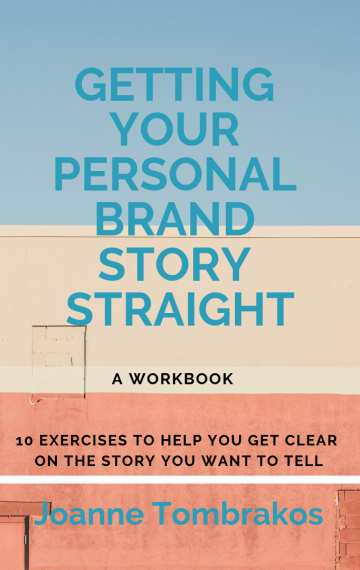Try Writing A Log Line
Our story is what defines us
It’s what attracts others to us. It’s what makes us interesting and unique and sets us apart from the person sitting next to us. It’s how we find our points of connection. That includes the bumps and detours along the way, that stuff that might embarrass us if we dared to say it out loud.
Our story is the essence of this idea of a personal brand
Most of us struggle with telling our story
We confuse our story with the stuff we include on our resume, that chronology of what we’ve done, where we’ve been and the schools we’ve attended.
We think that the telling of our story should be the picture-perfect version of ourselves, clean of any possible blemishes. Not only is the result pretty boring, but because it’s not our truth, it puts us at risk of coming across as inauthentic in a world in which we are all desperately in search of the real deal.
Now I’m not going to suggest that you include in your LinkedIn summary all your mishaps or you state proudly as David Meerman Scott does on his how he was fired by Newsedge in 2002. That works for him but it’s not necessarily going to work for everyone.
But I am going to suggest you come to terms with it
Until you do, those bumps and detours, like the time you got fired or the business venture you bet the house on that failed, are going to continue to derail you. One of the best ways I have discovered to do this is to write a personal logline.
I first learned about log lines when I read a blog post by author Steven Pressfield in which he interviewed Jen Grisanti, a Hollywood script consultant who advises her clients to write personal log lines to help in their scriptwriting.
This is how she defined log lines
A logline is a brief description of the plot of your story, which involves an emotional hook and a twist of irony. A logline organizes a story in the briefest form possible while retaining the strongest emotional effect.
Jen Grisanti
A logline includes a Set-Up: empathy for the central character, Dilemma: at least two solutions, Action: how the character pursues the goal and Goal: with a twist of irony.
Loglines are what Hollywood scriptwriters use to pitch their ideas to studios. In a business that suffered from short attention spans long before the rest of the world caught up, a logline is a device to spark further interest in the project.
That’s exactly what you want to happen when you share your personal brand story
You want to give us just enough information to be intrigued and interested to know more. Think of a first date. You don’t tell the person everything about you that night, not if you want a second date. You tell them just enough to make them want to know more.
For personal brand story purposes think of this as starting with an interesting character (you) who wants something but must navigate an obstacle.
Here are some examples from the world of film
A young Greek woman falls in love with a non-Greek and struggles to get her family to accept him while she comes to terms with her heritage and cultural identity.
(My Big Fat Greek Wedding)
An Iowa housewife, stuck in her routine, must choose between true romance and the needs of her family.
(Bridges of Madison County)
A young man and woman from different social classes fall in love aboard an ill-fated voyage at sea.
(Titanic)
When a socially inept and financially challenged Harvard student’s girlfriend dumps him, he creates an idea to rate the attractiveness of female Harvard undergrads as a way to mend his loss–and his idea becomes a global social sensation that makes him the youngest billionaire in history.
( Social Network)
When a corporate executive with a tidy life and comfortable income loses her job at the beginning of the worst economic downturn in modern history, she embarks on a journey of reinvention to discover her truth, happiness and financial success as a storyteller, consultant, and educator.
(oops – no Hollywood film on this one! That’s my personal log ine)
The thing that I love about writing loglines
You get to admit to your foils and obstacles – past or present – and you get to set the vision for how you’re going to get to the other side of them. It makes it easier to own your story and when you own it, it’s easier to tell it.
Warning: This exercise is for you to help you to get clear on your personal story and come to terms with whatever twists and turns you face at this moment. By no means am I suggesting you use this on your LinkedIn profile or your personal website – unless of course, you’ve decided you want to sell your story to Hollywood!!!




Leave a Reply